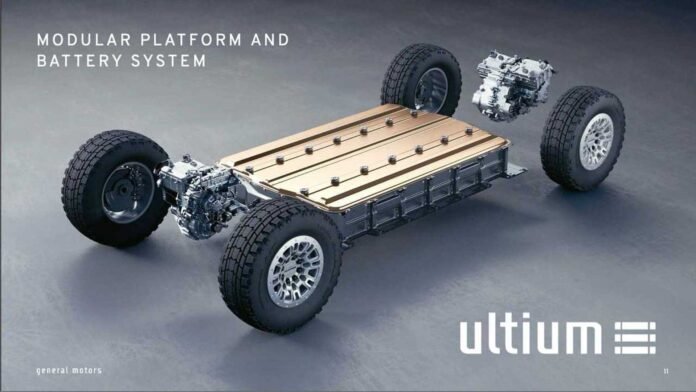- GM will ditch the Ultium brand name amid a broad shift in battery strategy.
- The automaker will continue using underlying batteries and technology platforms, but also incorporate LFP and nickel-rich prismatic cells.
- A new Battery Cell Development Center in Michigan aims to accelerate R&D.
When General Motors launched the Ultium electric vehicle platform and battery system four years ago, it said that this plan—one common architecture and family of modular batteries for all future models—would underpin millions of EVs for years to come. It would also, in theory, mean GM could make enough batteries at scale for EVs to become highly profitable.
But scaling up has been a nightmare in reality. Now, GM wants to kill the Ultium brand name, while keeping the underlying tech, and change its approach towards batteries.
The announcement comes from Kurt Kelty, GM’s vice president of battery cell and pack who spoke at the annual Investor Day presentation today. Besides abandoning a name that hasn’t really caught on, Kelty said these moves mean big changes for GM’s battery roadmap.
Here’s what Kelty said during the presentation:
It now makes business sense to transition from one-size-fits-all to new program specific batteries. As we do so, we will sunset the brand name Ultium for our EV batteries and technologies. Ultium will continue to be used in reference to our joint venture manufacturing sites and other facilities. But as we enter the next phase of our journey, the time is right to begin this transition.
Currently, GM’s main battery partner is LG Energy Solution. Now, Kelty said the automaker plans to incorporate different battery chemistries and varying cell shapes to tailor them to particular models. GM’s current Ultium packs power a dozen models, from the $35,000 Chevy Equinox EV to the $100,000 GMC Hummer EV, just in different sizes.
That will change for future models as GM prepares to include high-nickel, mid-nickel and lithium-iron-phosphate (LFP) cathodes. That includes using the current pouch cells for some models and also using the easier-to-assemble prismatic cells for others.
GM EVs currently are equipped with nickel-cobalt-manganese-aluminum cells made by the LGES joint venture. Now it plans to diversify. The automaker is in talks with Japan’s TDK Corp to produce LFP batteries in the U.S. using tech licensed from CATL.
The next-gen Chey Bolt EV will ride on the Ultium platform, but it will use LFP batteries, as has been announced previously. (Although initially, it may not use U.S.-made packs.)
LFP batteries are cheaper to produce than nickel-manganese-cobalt (NMC) cells, boast better thermal performance and last longer. But they are less energy dense and hence more suitable for entry level models, like the rear-wheel drive Tesla Model 3 and the Standard Range Ford Mustang Mach-E.

Ultium Cells LLC Battery Plant in Warren, Ohio
Although Kelty added that GM’s truck platform has enough space, that with clever engineering, it can add low-cost LFP batteries and still extract a range of over 350 miles.
To accelerate these plans, GM will conduct battery R&D at the Wallace Battery Cell Innovation Center at GM’s campus in Warren, Michigan and at the new Battery Cell Development Center that it announced today. Kelty said the new center will help GM make enough cells for early vehicle prototype, testing and validation.
The new center is expected to be up and running by 2027 and together the two facilities will be able to develop new packs and get them ready for production in 18 months. Kelty admitted the challenges GM faced in scaling up battery production but added, “I can confidently tell you that the manufacturing problems we faced at the end of last year are behind us.”
GM increased its battery module production by 10 times compared to the last year and its Ohio-based JV with LGES is on track to produce 100 million cells by the end of this year. GM is also building a new $3.5 billion battery plant in Indiana in partnership with Samsung SDI to develop nickel-rich prismatic cells.
Kelty said all of this is meant to “significantly” reduce battery weight, drive down costs and make manufacturing less complex. GM last year said it was abandoning its goal of selling 400,000 EVs by mid-2024—now its on track to produce and deliver about 200,000 EVs this year. And this revised battery strategy might help it unlock a new phase of mass production while potentially improving the range and charging speeds of its EVs.
For all these challenges, including software issues and moving sales goalposts several times, GM is doing comparatively well in electric sales. It just posted yet another consecutive quarter of EV deliveries and may close the year as America’s no. 2 electric automaker behind Tesla.
Contact the author: suvrat.kothari@insideevs.com

Source link by Battery Tech – News and Trends | InsideEVs
Author
#Dump #039Ultium039 #Branding #Rethink #Batteries





